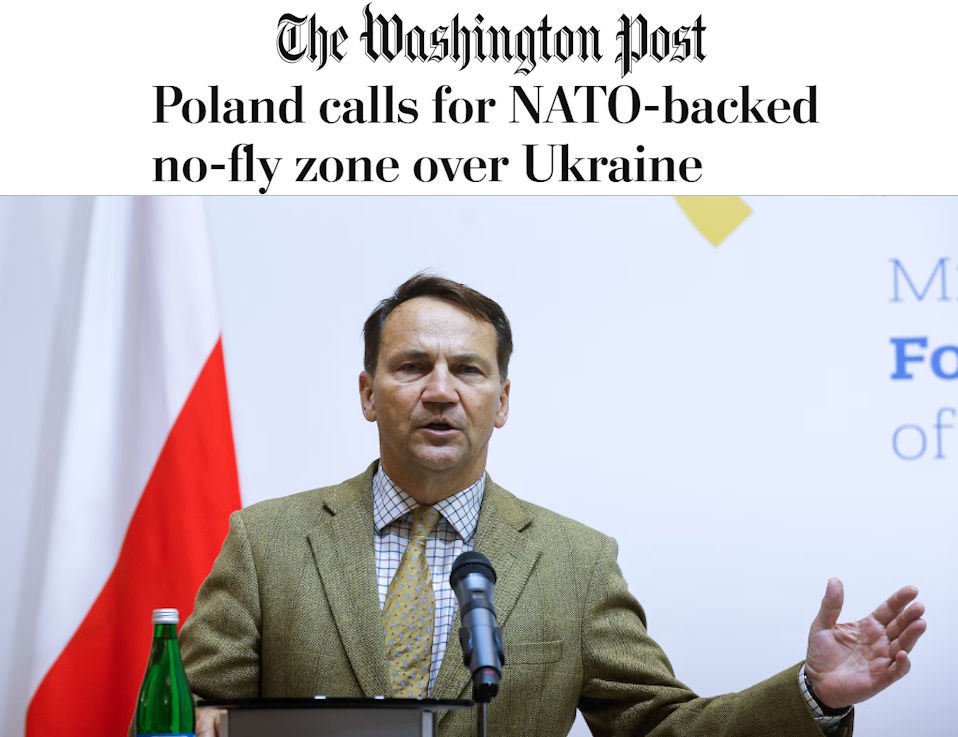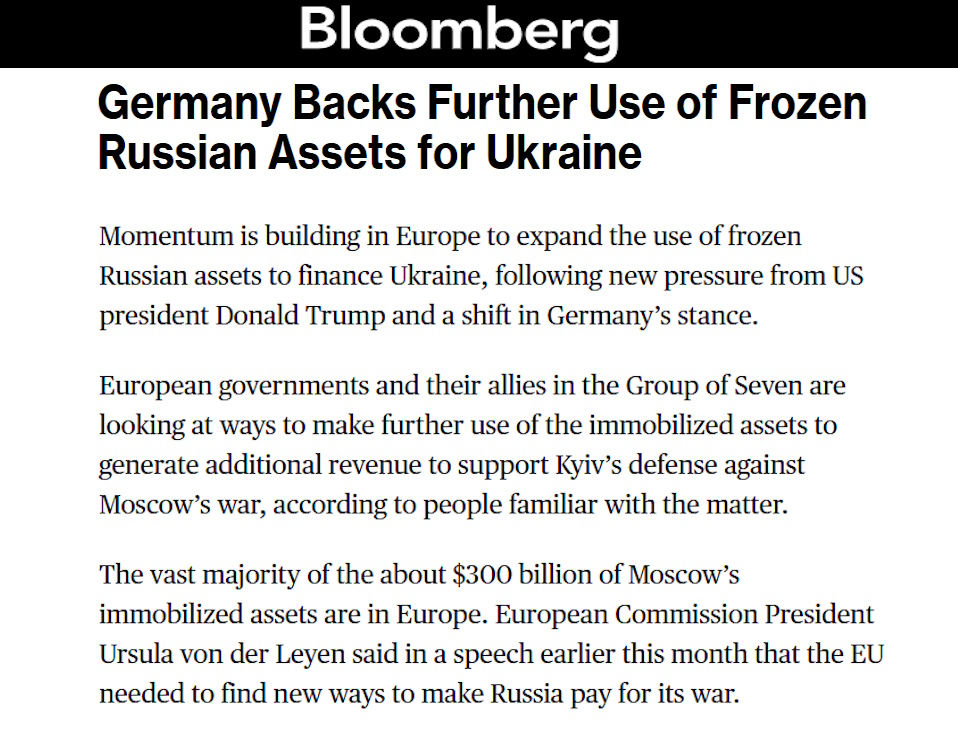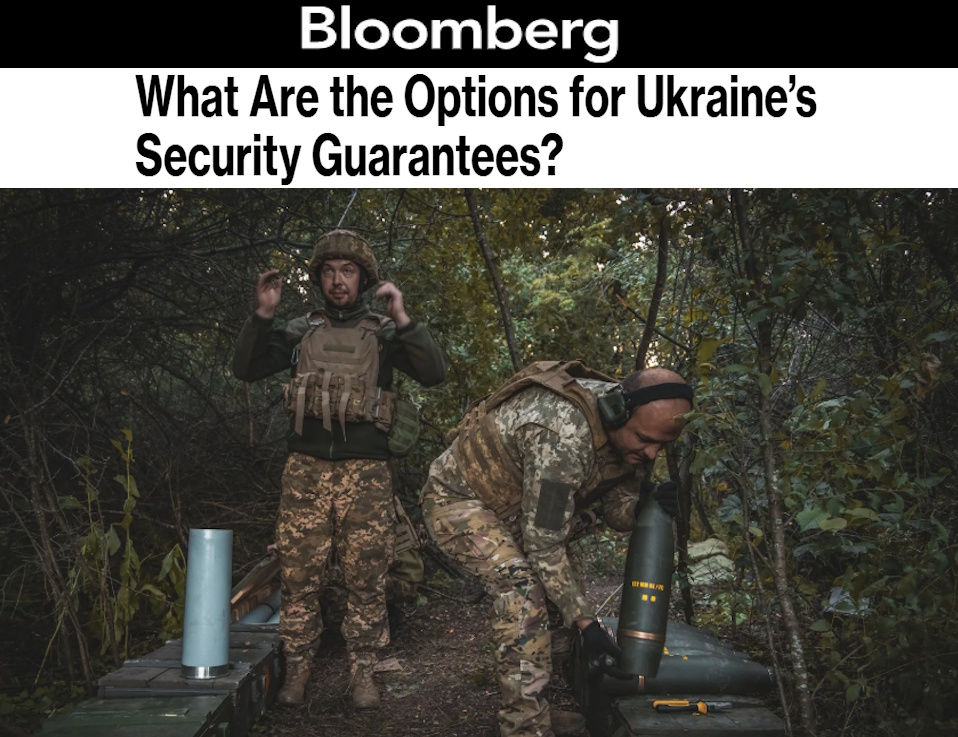International Press Review for 8–19 September 2025
- Anton Kuchuhidze

- Sep 18
- 5 min read
In recent weeks, the issue of russian drones violating Polish airspace has become one of the most pressing topics in Western media. In response to these incidents, NATO has deployed fighter jets and activated air defense systems. Polish Prime Minister Donald Tusk stated that the threat of a full-scale conflict in Europe is "closer than ever since World War II."
Warsaw has invoked Article 4 of the NATO Charter, which provides for consultations among allies in the event of a threat to the territorial integrity, political independence or security of a member state. The Alliance will now begin collective discussions on a possible response, a step away from invoking Article 5, which stipulates mutual defense in the event of an attack.
In an article by Foreign Policy titled "Russia Has Attacked NATO Again," it is noted that putin is likely testing the resolve of the Western alliance. However, that resolve still appears uncertain. The solution is clear: allies must urgently provide Ukraine with long-range strike capabilities that can hit targets deep inside russian territory. This would serve as a real deterrent for the kremlin.
The U.S. Senate could lead a tough response by passing a sanctions bill enabling secondary sanctions and tariffs against countries that continue to purchase russian energy. The very passage of such a law would send a powerful signal of Western unity.
Most importantly, the U.S. and the EU must finally confiscate approximately $300 billion in frozen russian assets held in Western banks and direct those funds to support Ukraine. The russian economy is already under enormous pressure and significant financial assistance to Ukraine would make it extremely difficult for moscow to continue the war.
The Washington Post reports that Polish Foreign Minister Radosław Sikorski has urged NATO countries to consider implementing a no-fly zone over Ukraine to protect Europe from russian missile and drone attacks. Sikorski emphasized that Poland cannot make such a decision unilaterally — it requires collective support from NATO allies and the European Union.
In a Bloomberg article, former NATO Supreme Allied Commander Europe James Stavridis emphasizes that the Alliance has the technical and organizational capacity to effectively defend its airspace. He proposes a comprehensive set of measures, including: imposing secondary sanctions on countries that trade with russia; a full ban on the import of russian energy resources; the confiscation of approximately $300 billion in frozen russian assets; and the provision of long-range missiles and precision-guided drones to Ukraine to target russia’s UAV production and launch infrastructure.
According to him, the time has come for decisive action: only a combination of a no-fly zone with economic and diplomatic pressure can force the kremlin to abandon its plans for the total conquest of Ukraine.
Additionally, Bloomberg reports growing support in Europe for the expanded use of frozen russian assets to finance aid to Ukraine. This shift is driven by new pressure from U.S. President Donald Trump and a change in Germany's position — a country that had previously approached the issue cautiously but now advocates for the maximum use of profits from frozen russian funds to support Ukraine.
A drone attack on the territory of a NATO member state is not merely a provocation, it is a genuine act of aggression with potentially historic consequences. The Alliance’s response to this incident is a critical test of its resolve and ability to deter an aggressor. So far, the reaction has been cautious, but that may not be enough. NATO must establish a new defense architecture on its eastern flank.

The U.K. outlined a fresh package of 100 sanctions against Russia that targets ships carrying Russian oil as well as companies supplying electronics, chemicals and explosives used to manufacture weapons.
“International action to increase economic pressure on Russia and to cut off critical cash flows which he desperately needs to pay for this illegal war is vital,” said U.K. Foreign Secretary Yvette Cooper on Friday.
The measures came in response to violation of North Atlantic Treaty Organization airspace over Poland by Russian drones earlier this week and recent strikes directly hitting the Ukrainian cabinet of ministers, damaging the British Council and EU delegation buildings in Kyiv.

Poland’s foreign minister called on NATO countries to impose a no-fly zone over Ukraine to protect Europe from Russian strikes amid the continuing fallout over the drone incursion into Poland last week, which prompted the U.S.-led alliance to scramble fighter jets.
In remarks published Monday, the foreign minister, Radoslaw Sikorski, told the German news outlet Frankfurter Allgemeiner that the idea was broached a year ago with the Biden administration but that it could not be carried out just by Poland, and would need the support of other European allies.

Last night, Russia invaded NATO. Any other description is an obfuscation. At least 19 Russian drones, some launched from Belarus (Moscow’s close ally), flew into Poland. NATO scrambled jets and activated air defenses.
The way ahead for NATO is clear. Its members should immediately provide Ukraine with long-range strike weapons that can hit targets deep inside Russia. That would cause Putin real pain and dramatize the costs of escalating his war. NATO should also move to dramatically upgrade its own defenses along its eastern border—perhaps by setting up its own version of a “drone wall,” a drone fleet that can respond quickly to threats from land or air. Shooting down drones in Russian or Belarusian airspace, though, would probably be a step too far.

Germany — long cautious about safeguarding Europe’s financial hub and respecting state immunity — has emerged as a strong advocate for maximizing the returns from the funds, said the people, who spoke on the condition of anonymity. Berlin’s shift comes amid concern that if US support under Trump wanes, the burden of backing Ukraine would fall heavily on Europe’s largest economy, which could further fuel the rise of Germany’s far right.

A no-fly zone is a very aggressive move, and it carries real risk of further escalation. But given Putin’s recklessness, ruthlessness and intransigence — most clearly demonstrated by his ignoring Trump’s personal efforts at diplomacy — we have arrived at the time to close the skies over Ukraine. In concert with other economic and diplomatic tools, it may be the only way to convince Moscow that its attempts to conquer all of Ukraine will prove futile.

Security guarantees for Ukraine emerged as a key topic of negotiation after US President Donald Trump renewed his efforts to broker a peace deal to end Russia’s war.
Ukrainian President Volodymyr Zelenskiy has long insisted that the US and Europe must provide commitments to deter further Russian aggression. The form these take could influence Europe’s security architecture for decades to come.
Zelenskiy would like for Ukraine to ultimately become a member of the North Atlantic Treaty Organization, so that it’s afforded protection under what’s seen as the gold standard of security guarantees: Article 5. That’s a red line for Russia, although Ukraine’s allies have discussed the potential for an “Article 5-like” arrangement instead. Ukraine is also continuing to pursue deeper regional integration as it seeks membership of the European Union.

US President Donald Trump said that his patience with Russian President Vladimir Putin was “running out fast” and threatened Moscow with new economic sanctions as efforts to broker ceasefire talks with Ukraine have faltered.
“It’ll be hitting very hard on with sanctions to banks and having to do with oil and tariffs also,” Trump said Friday in an interview on Fox News.
The US will also tell the G-7 countries they should create a legal pathway to seize immobilized sovereign Russian assets and consider seizing or using the principle of those assets to fund Ukraine’s defense, according to a US proposal seen by Bloomberg. The vast majority of the about $300 billion of Moscow’s immobilized assets are in Europe.

Comments